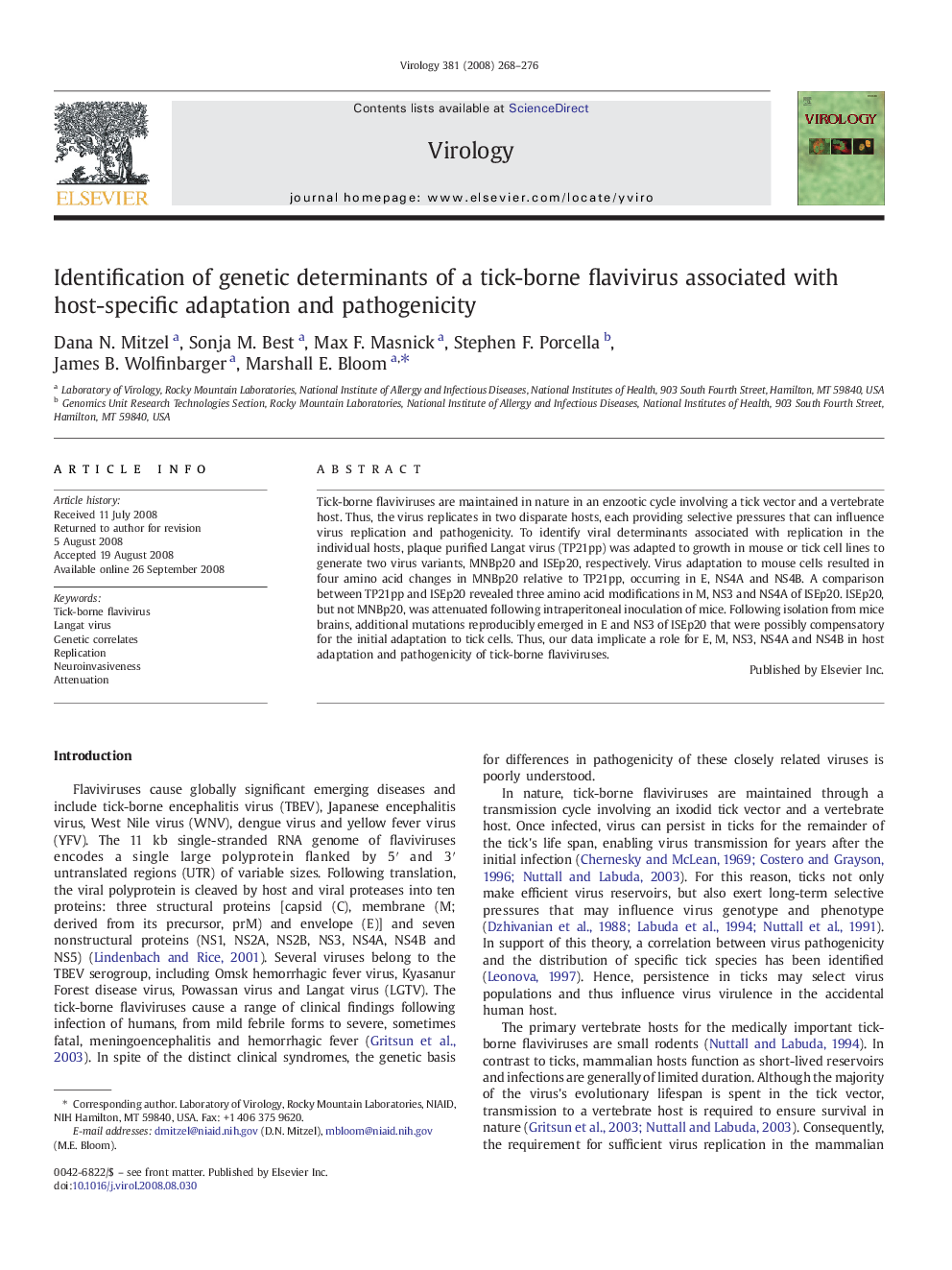| Article ID | Journal | Published Year | Pages | File Type |
|---|---|---|---|---|
| 3426081 | Virology | 2008 | 9 Pages |
Tick-borne flaviviruses are maintained in nature in an enzootic cycle involving a tick vector and a vertebrate host. Thus, the virus replicates in two disparate hosts, each providing selective pressures that can influence virus replication and pathogenicity. To identify viral determinants associated with replication in the individual hosts, plaque purified Langat virus (TP21pp) was adapted to growth in mouse or tick cell lines to generate two virus variants, MNBp20 and ISEp20, respectively. Virus adaptation to mouse cells resulted in four amino acid changes in MNBp20 relative to TP21pp, occurring in E, NS4A and NS4B. A comparison between TP21pp and ISEp20 revealed three amino acid modifications in M, NS3 and NS4A of ISEp20. ISEp20, but not MNBp20, was attenuated following intraperitoneal inoculation of mice. Following isolation from mice brains, additional mutations reproducibly emerged in E and NS3 of ISEp20 that were possibly compensatory for the initial adaptation to tick cells. Thus, our data implicate a role for E, M, NS3, NS4A and NS4B in host adaptation and pathogenicity of tick-borne flaviviruses.
